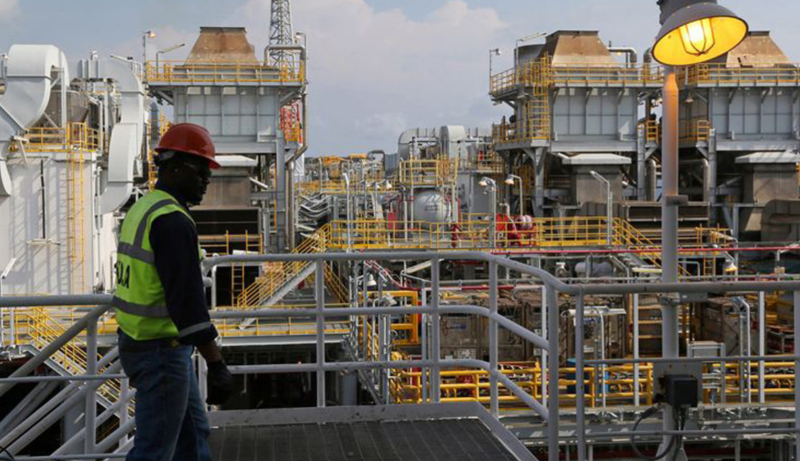Compared to Nigeria’s projected oil production of 468.8 million barrels in the first three quarters of 2022, the country was only able to drill 284.70 million barrels at the end of September, a THISDAY review of data from the Nigerian Upstream Petroleum Regulatory Commission (NUPRC), has shown.
The difference in the country’s oil production pegged against its oil benchmark of 1.88 million barrels per day in the 2022 budget, means that the country was only able to produce just about 60 per cent of its total forecast for the period.
There was still no production from Asarama, Okwori, Ajapa, Anambra basin, Oyo, Ukpokiti, Ima and Akpọ terminals during the period under review, a development that further hobbled the quantity of oil forecast for drilling in the first nine months of the year. Aje terminal did not also produce a drop of oil.
With a 58.2 million barrels per month estimate approved benchmark by the National Assembly in December 2021, the difference between actual and projected output was a whopping 184.1 million barrels of unproduced oil.
Between the previous month of August and September, crude production fell massively at the Bonny terminal from 749,463 barrels to 167,582 barrels, in Brass, it slumped from 270,932 barrels to 172,814 barrels while at the Qua Iboe terminal it increased just marginally from 4.79 million barrels to 4.97 million barrels for the month of September.
Nigeria’s oil sector challenges have recently worsened, with production hitting a higher record low of 972,394 barrels per day in August and plunging to a new record low of 937,000 in September.
Nigeria’s capacity to drill enough oil to boost its desperately needed foreign exchange even at a time that the commodity has continued to sell around a rarely-seen price of $100, has been severely challenged by a horde of issues.
The decrease below the 1 million bpd mark production in September despite months of assurances of planned improvement by the Nigerian authorities, was more than 10 per cent compared to the previous month.
On a daily basis, production for July 2022 averaged 1.083 million barrels per day; in June the country’s production was 1.158 million bpd; it was 1.024 million bpd in May; 1.219 million bpd in April, 1.237 million bpd in March; 1.257 million bpd in February and 1.398 million bpd in January.
The quota given by the Organisation of Petroleum Exporting Countries (OPEC) to the country for the month of August was 1.830 million barrels per day, meaning that Nigeria under-produced to the tune of over 853,606 bpd in September.
Although the country has recently taken a rash of measures to curtail the oil theft menace, they so far appear to have defied all solutions, as production has continued to decline.
A few of the steps taken so far by the government include the renewed deployment of security personnel in the Niger Delta and the real-time monitoring of activities around the pipelines by the Nigerian National Petroleum Company Limited (NNPC).
In addition, the national oil firm has introduced the whistle-blower strategy as well as the handing over of a N4 billion monthly surveillance contract to ex-militant, Government Ekpemupolo, popularly known as Tompolo.
The federal government has variously blamed massive oil theft, vandalism of major assets, dilapidated infrastructure as well as declining upstream investment for its inability to drill more of the commodity.
Whereas the monthly production projection in the 2022 budget was 58.2 million barrels given the 1.88 million barrels per day forecast, the actual output for the period told a different story.
A breakdown of the data indicated that there has been a steady decline in production levels. In January, total crude oil production output was 43,353,723 barrels; in February, it was 35,217,997 barrels while in March, production was 38,364,770 barrels.
In April, production fell to 36,576,449 barrels; in May, it fell further to 31,755,488 barrels while in June, July and August, the data showed that output were 34,748,214; 33,600,878 and 30,144,212 million barrels respectively. In September, it further declined to a record 28.1 million barrels.
Speaking on the situation recently, the Group Chief Executive of the NNPC, Mallam Mele Kyari said the increasing rate of vandalism had caused massive disruptions in oil production, noting it was the worst the country had ever witnessed.
“As we speak now, there is massive disruption to our operations as a result of the activities of vandals and criminals along our pipelines in the Niger Delta area. This has brought down our production to levels as low as we have never seen before,” he stated, but added that the company was “not hopeless.”
But Kyari promised that by October ending, some of the lines that had been dormant due to massive damage done by economic saboteurs will be brought back on stream. It’s unclear if that has happened.
Recently, THISDAY reported that with an estimated average oil price of $100 for the month, the country lost over $756 million to shut-ins in August, according to an analysis of data from the NNPC.
Forcados terminal also curtailed supply as a result of the closure of the facility, following reports of a ‘sheen’ in the vicinity of the facility, a number of other facilities have also been negatively impacted. The Forcados asset is operated by Shell Petroleum Development Company (SPDC).
Bonny terminal in the last few months took a hit, with force majeure declared as a result of the shutdown of the terminal. The facility lost a humongous 3.545 million barrels in July.
Nigeria, Africa’s largest oil producer and a member of the Organisation of Petroleum Exporting Countries (OPEC) has tried to stamp out sabotage on its pipeline network in recent years without much success.
SOURCE: THISDAY











